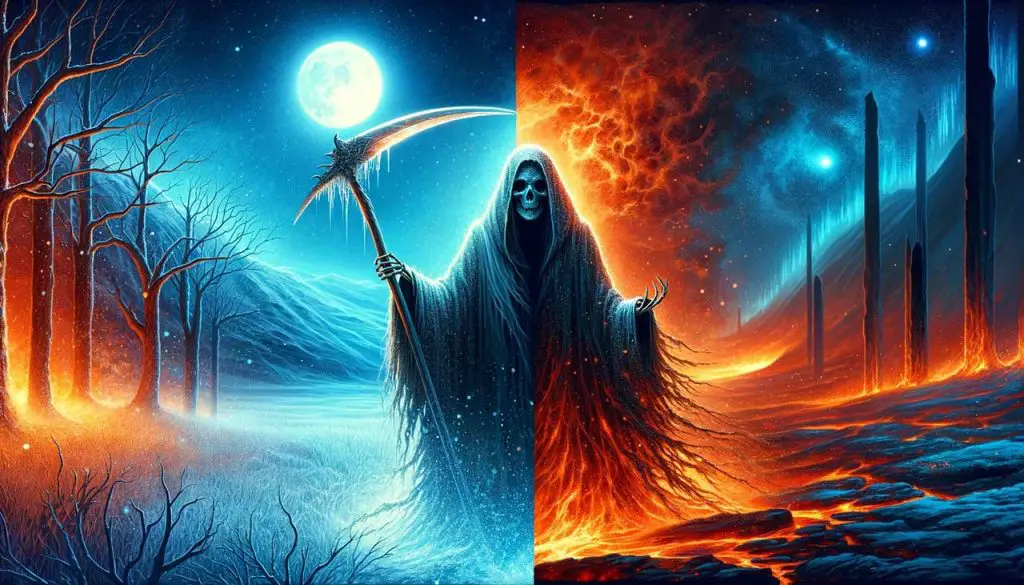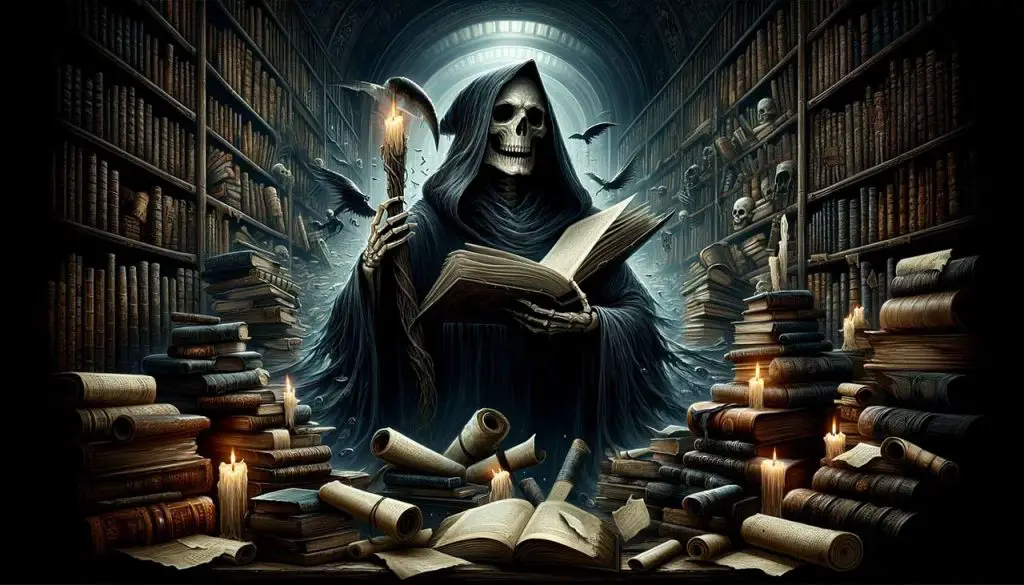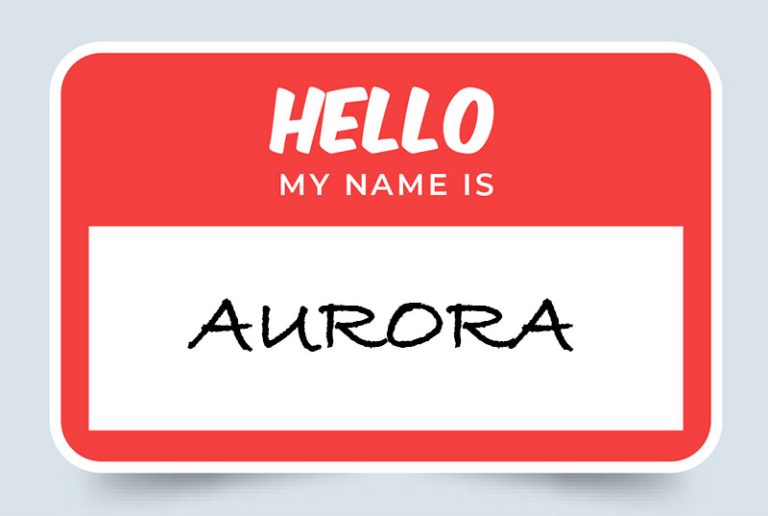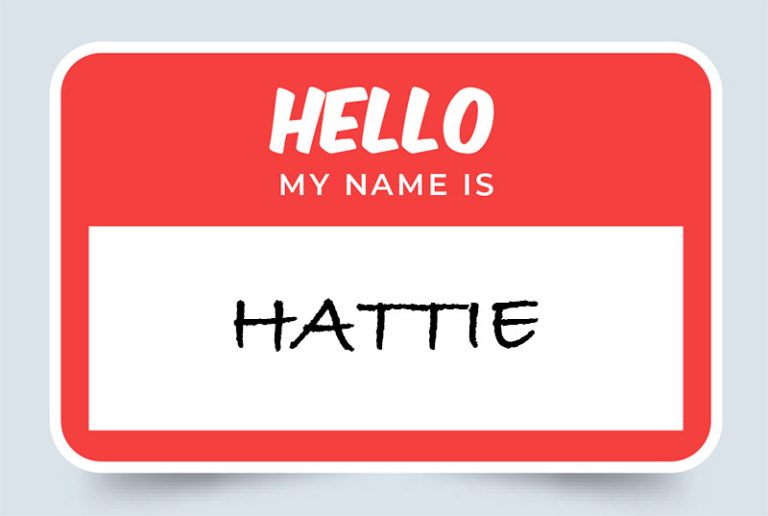60+ Other Names for the Grim Reaper: A Comprehensive List of Aliases
The Grim Reaper. An iconic symbol of death & mortality.
Known as the harvester of souls, this dark entity is often shown as a skeletal figure dressed in a long, black cloak & carrying a large scythe.
But did ya know that the Grim Reaper ain’t just known by this name?
There’s lotsa other names for this ominous being. From different cultures & regions.
Some of these names include Azrael, Shinigami, Smrt, & Santa Muerte. Its shows how diff cultures see death & the role it plays in human life.
Grim Reaper Names
He’s got many names that capture his morbid essence.
Some more common than others.
We gots ’em all for ya.

- Death: most straightforward & universally understood personification of the end of life.
- Angel of Death: A figure that signals the coming of death, often seen as an executor of the divine will in various religious texts.
- The Pale Horseman: from the Four Horsemen of the Apocalypse in the Christian Bible, specifically representing death.
- The White Horseman: Sometimes used for the “Pale Horseman.”
- Father Time: not always directly associated with death, Father Time symbolizes the passage of life, often depicted with a scythe like the Grim Reaper.
- The Dark Angel: A poetic variation, emphasizing the somber, angelic aspect of guiding souls to the afterlife.
- The Harvester: Reflecting the Grim Reaper’s scythe, whiich harvests souls as a farmer would harvest crops.
- Old Man Death: emphasizes the inevitable, natural progression toward death as part of life’s cycle.
Cultural Reaper Names
The Grim Reaper’s gots many names across different cultures & mythologies around the world.
We gots a big ole list of names the Grim Reaper’s known as across the globe.

- Ankou: In Breton culture, a skeletal figure that collects the souls of the deceased.
- Anubis: in Egyptian mythology, the god who guides & protects the souls of the dead.
- Azrael: the Angel of Death in Islam, guiding souls to the afterlife.
- Baba Yaga: In Slavic folklore this witch-like character is associated with the supernatural & can be seen as a guardian of the boundary between life & death.
- Banshee: In Irish folklore, a female spirit whose wail is believed to foretell a death in the family.
- Charon: ferryman of the dead in Greek mythology, seen with the journey after death.
- Dullahan: headless horseman in Celtic folklore, seen as an omen of death.
- Father Time: Often conflated with the Grim Reaper, especially in Western cultures, symbolizing the passage of time & the inevitability of death.
- Finis: Roman deity associated w/ the end of life.
- Freya: In Norse mythology, primarily a goddess of love & fertility, Freya also receives half of those who die in battle, similar to the Valkyries’ role.
- Giltinė: In Lithuanian mythology, the personification of death.
- Heibai Wuchang: In Chinese mythology, two deities who guide the souls to the afterlife.
- Hel: Norse deity overseeing the dead in the underworld.
- Kali: In Hindu mythology, a goddess associated w/ time, change, & destruction, sometimes linked to death.
- King Yama: In Hindu & Buddhist beliefs, the god of death who presides over the underworld.
- La Calavera Catrina: stylish skeletal figure from Mexican Day of the Dead celebrations, not a direct Grim Reaper but a death symbol.
- La Parca: “The Robe” in Latin American cultures, sometimes depicted w/o a scythe.
- Laima: In Latvian & Lithuanian mythologies, a goddess of fate who also is over childbirth & death.
- Magere Hein or Magere Hein: The Dutch & German names for the Grim Reaper, translating to “Meager Hein” or “Skinny Hein.”
- Mania: In Etruscan mythology, the goddess of the dead.
- Morrigan: In Irish mythology, a goddess of war & fate, associated w/ death & the afterlife.
- Mot: In Canaanite religion, the god of death.
- Oya: In Yoruba religion, goddess of the wind, lightning, & the dead.
- Psychopomps: Spirits or deities across various cultures that escort souls to the afterlife.
- San La Muerte: A skeletal folk saint venerated in parts of Argentina, Brazil, & Paraguay.
- Santa Muerte: “Holy Death” or “Saint Death,” a folk saint in Mexican culture.
- Shinigami: Japanese “Death Gods” who invite humans toward death.
- Smrt or Smierć: A feminine personification of death in certain Slavic traditions.
- Thanatos: Greek personification of death.
- The Dullahan: Another mention of the headless horseman from Irish mythology, carrying his head under his arm.
- The White Rider: One of the Four Horsemen of the Apocalypse, representing Pestilence or Conquest, but often associated w/ death in popular culture.
- Valkyries: In Norse mythology, female figures who guide the souls of fallen warriors.
- Yanluo Wang: In Chinese mythology, the ruler of the underworld, similar to King Yama.
Pop Culture Reaper Names
Pop culture gots lotsa made-up names & characters that embody or parody the Grim Reaper.
These are all about death in humorous, dramatic, or unconventional ways.

We got pop culture Grim Reaper names:
- Agent 47: From the “Hitman” video game series, referred to as “The Reaper” due to his profession as an assassin.
- Charon: traditionally the ferryman of the dead in Greek mythology, Charon has been reimagined in various video games & stories as a more direct personification of death.
- Death’s Head: A freelance peacekeeping agent (robot) in the Marvel Comics universe, who’s crossed paths w/ many heroes & villains.
- Dr. Death: nickname given to some characters in comics & movies, often playing on the theme of a medical professional who causes death rather than preventing it.
- Grim: From “The Grim Adventures of Billy & Mandy,” an animated series where the Grim Reaper is comically enslaved to two children, Billy & Mandy, after losing a bet.
- Lady Death: comic book character who’s the embodiment of death & ruler of Hell in her own universe.
- Mr. Death: character from “Family Guy,” portrayed as a typical Grim Reaper figure who sometimes visits the Griffin family.
- Ryuk: A Shinigami from the manga & anime series “Death Note,” who drops a Death Note into the human world out of boredom, leading to the story’s events.
- The Arbiter: From the “Halo” video game series, not a direct representation of death, the title & role have been associated w/ judgment & the afterlife in fan interpretations.
- The Black Racer: A character in the DC Comics universe, portrayed as a death god associated w/ the New Gods.
- The End: From the video game “Metal Gear Solid 3: Snake Eater,” an ancient sniper who embodies the concept of death through his age & skill.
- The Judge: From the video game “Dark Souls,” a figure that players encounter who serves as a gatekeeper to death & the afterlife.
- The Marauder: From the “Doom” video game series, a demonic entity that symbolizes death & destruction.
- The Pale Man: From Guillermo del Toro’s film “Pan’s Labyrinth,” a monstrous & eerie figure associated w/ death & suffering.
- The Phantom: In the “Harry Potter” series by J.K. Rowling, a being that represents death in “The Tale of the Three Brothers.”
- The Reaper: In the TV show “Supernatural,” Reapers are beings that assist souls in moving to the afterlife.
- The Shadow: In the “Persona” video game series, entities that represent death, fear, & the darker aspects of human psychology.
- The Soul Collector: A character archetype found in various stories & movies, tasked with collecting the souls of the deceased or marked.
- The Undertaker: A professional wrestling persona by Mark Calaway, known for his “Deadman” gimmick, often associated w/ deathly imagery & powers.
Grim Reaper: A Global Perspective
The Grim Reaper’s popular as a personification of death throughout the world.

In several religions, the Angel of Death named Azrael = the personification of death.
Azrael escorts souls to the afterlife.
Similar to Azrael, the Hindu & Buddhist mythologies have King Yama, the god of death who presides over the underworld.
Latin American cultures are gots representations of death.
Santa Muerte, meaning “Holy Death,” is a folk saint in Mexico.
In certain Slavic countries, Smrt or Smierć is a feminine personification of death. She’s an old, emaciated woman wearing dark robes.
The Japanese feature Shinigami, or “Death Gods,” who’re similar to Western Grim Reapers.
Some of these aren’t feared.
For example, Psychopomps, who’re spirits or deities that guide souls to the afterlife, act like navigators or advisers, instead of scary collectors of souls.
Cultural Variations of the Grim Reaper

European Perspectives
In European mythology, there’s several figures that represent death or serve as harbingers of it.
Thanatos is the Greek personification of death, son of Nyx (the Night) & Erebus (the Darkness).
He is the twin brother of Hypnos (Sleep) & has a close connection to the concept of dying.
In Celtic folklore, the Dullahan is a headless horseman who carries his own head & serves as an omen of death.
In Breton culture, Ankou is a skeletal figure that collects the souls of the recently deceased.
Nordic mythology has Valkyries, female warriors who guide the souls of fallen soldiers to the afterlife.
Finis, from Roman mythology, is a minor deity associated w/ the end of human life.
Asian Perspectives
Asian cultures gots their own Grim Reaper.
In Chinese mythology, there are figures called Heibai Wuchang, two gods of the underworld that determine the fate of the dead.
They’re capturing & escorting the souls of the deceased to the afterlife.
In Japanese mythology, Shinigami are death spirits that invite humans toward death. They’re not responsible for death but a catalyst for events leading to it.
Latin American Perspectives
In Latin American culture, a common name of death is La Parca (“The Robe”).
This entity is similar to the Grim Reaper but is female & w/o a scythe.
Another significant figure is Mictlantecuhtli, an Aztec god of death who ruled over the lowest & northernmost sections of the underworld.
He was associated with funerary rituals & was often seen embellished with skeletal imagery.
Grim Reaper in Literature & Popular Culture
The Grim Reaper has been a popular figure in literature & popular culture. F
In Neil Gaiman’s “The Sandman” comic series, the character Death is a pale, charming young woman instead of traditional skeletal figure.

Concepts Related to Death
Synonyms for the Grim Reaper & the concept of death are plentiful.
We gots some ya might come across:
- Decease: formal term for death or the state of being dead.
- Cessation: act of ending or stopping life.
Well, did ya get a good name idea?







